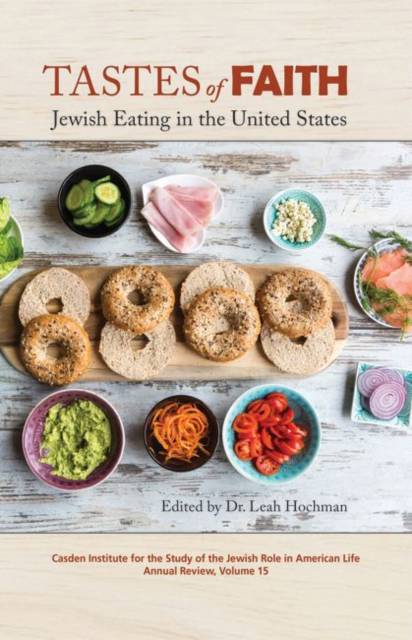
- Retrait gratuit dans votre magasin Club
- 7.000.000 titres dans notre catalogue
- Payer en toute sécurité
- Toujours un magasin près de chez vous
- Retrait gratuit dans votre magasin Club
- 7.000.0000 titres dans notre catalogue
- Payer en toute sécurité
- Toujours un magasin près de chez vous
Tastes of Faith
Jewish Eating in the United States
42,45 €
+ 84 points
Description
"Tell me what you eat, and I will tell you what you are," wrote the 18th Century French politician and musician Jean Brillat-Savarin, giving expression to long held assumptions about the role of food, taste, and eating in the construction of cultural identities.
Foodways--the cultural, religious, social, economic, and political practices related to food consumption and production--unpack and reveal the meaning of what we eat, our tastes. They explain not just our flavor profiles, but our senses of refinement and judgment. They also reveal quite a bit about the history and culture of how food operates and performs in society. More specifically, Jewish food practices and products expose and explain how different groups within American society think about what it means to be Jewish and the values (as well as the prejudices) people have about what "Jewish" means. Food--what one eats, how one eats it, when one eats it--is a fascinating entryway into identity; for Jews, it is at once a source of great nostalgia and pride, and the central means by which acculturation and adaptation takes place. In chapters that trace the importance and influence of the triad of bagels, lox, and cream cheese, southern kosher hot barbecue, Jewish vegetarianism, American recipes in Jewish advice columns, the draw of eating treyf (nonkosher), and the geography of Jewish food identities, this volume explores American Jewish foodways, predilections, desires, and presumptions.Spécifications
Parties prenantes
- Editeur:
Contenu
- Nombre de pages :
- 160
- Langue:
- Anglais
- Collection :
- Tome:
- n° 15
Caractéristiques
- EAN:
- 9781557537997
- Date de parution :
- 15-12-17
- Format:
- Livre relié
- Format numérique:
- Genaaid
- Dimensions :
- 150 mm x 226 mm
- Poids :
- 639 g

Les avis
Nous publions uniquement les avis qui respectent les conditions requises. Consultez nos conditions pour les avis.





